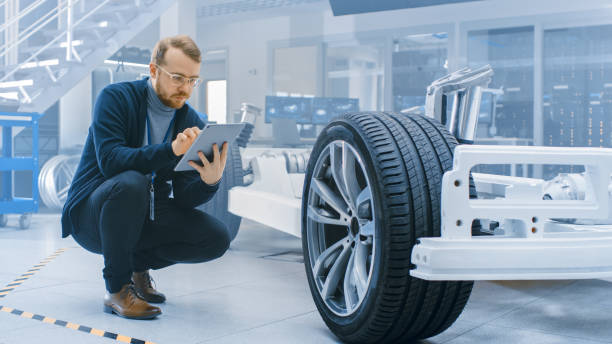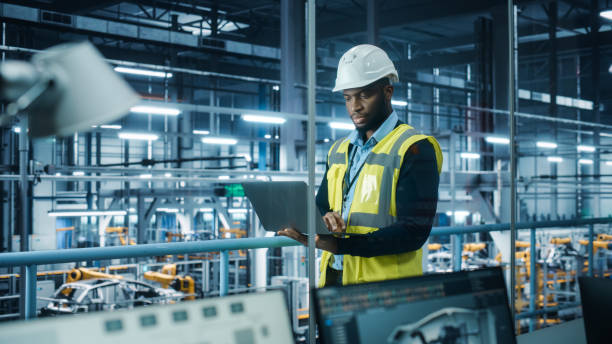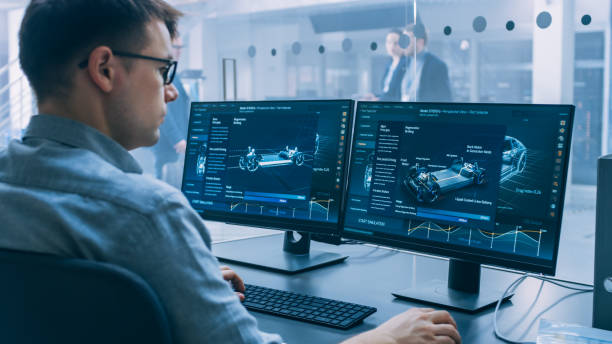As AutoX becomes China’s first to remove safety drivers from its robotaxis, the rise of driverless vehicles has created a new wave of disruption in the transportation landscape. As a result, many cities embrace driverless vehicles as an innovative solution to various transportation challenges.
This article will explore the impact that driverless vehicles will have on the transportation landscape, from the implications for safety to the potential for optimization of road networks.
Overview of AutoX’s achievement
AutoX, a leader in the driverless vehicle space, has made several impressive accomplishments since they first launched their autonomous vehicle program. Named one of the “Top 10 breakthroughs in autonomous driving technology” by Fast Company, AutoX has enabled its fleet to drive safely and accurately on unpredictable streets without any human input.
Autonomous vehicles from AutoX have achieved over 50 million successful miles cumulatively with extremely low latency, using purely AI-driven techniques.
Not only have their vehicles gained experience and navigated city streets at scale and in real-world conditions, but using their robust platform for sensing road conditions, processing data from multiple cameras and LIDARs (Light Detection and Ranging), AutoX has been able to navigate diverse scenarios with zero accidents or incidents due to its advanced deep learning technologies.
Autonomous vehicles from AutoX can detect objects on the street and make sense of complex traffic patterns such as pedestrians crossing busy intersections and emergency vehicle sirens that require vehicles to yield right of way. This solidifies AutoX’s place at the forefront of driverless car technology revolutionizing transportation!

Impact of driverless vehicles on the transportation landscape
The introduction of driverless vehicles to the transportation landscape is sure to revolutionize how people view travel. Autonomous vehicles equipped with advanced computer vision, sensors and algorithmic technology provide a safer and more efficient transport experience than ever before. Driverless vehicles will not only reduce the number of accidents on the road, but they can also reduce fuel consumption and emissions due to the increase in ride-sharing opportunities. In addition, driverless vehicles can help reduce traffic congestion and make roads safer by allowing cities to better manage their transportation systems.
Furthermore, driverless cars are expected to also lead to changes in public transportation. For example, as autonomous technologies become more widespread in public transit, it could improve access for elderly or disabled individuals by providing door-to-door service rather than hub-based service provided by traditional transit systems. Autonomous bus fleets have already been deployed in some cities and ride services such as Lyft’s autonomous vehicle program are already being tested in select markets.
Driverless vehicles will also create job opportunities for those who specialize in developing and maintaining autonomous technologies and those who will be building and deploying the infrastructure necessary for integrating them into the existing transportation networks. Finally, driverless cars may increase users’ convenience by reducing waiting times for ridesharing services such as Uber or Lyft while offering an enhanced travel experience with features such as entertainment options during long trips.
Overall, driverless vehicle technology promises to improve our lives through better access to transportation services with greater safety, comfort and efficiency than ever before.

AutoX becomes China’s first to remove safety drivers from robotaxis
Autonomous vehicles, also known as driverless, self-driving, or robotic vehicles, can sense their environment and move safely with little or no human intervention. As a result, autonomous vehicles are becoming increasingly popular and used in commercial applications such as robotaxis.
The recent announcement of AutX being China’s first company to remove safety drivers from their robotaxis marks a major milestone in the development of autonomous vehicles.
This article will explore how autonomous vehicles will change the transportation landscape.
Definition of autonomous vehicles
Autonomous vehicles, also known as driverless vehicles or self-driving cars, use advanced technologies to travel through a given environment without any human assistance. As a result, autonomous vehicles have the potential to dramatically reduce traffic congestion, accidents, and human error on the roads.
Autonomous vehicles range from cars to trucks, buses and other specialty equipment. They are equipped with sensors and actuators to detect their surroundings and maneuver through their environment without any input from a driver. Autonomous systems can have varying levels of control including full autonomy (no human input), partial autonomy (some level of human input) or conditional autonomy (regular checks for manual intervention). Autonomous vehicles can navigate in controlled zones such as airports, smart cities and industrial areas.
Given the complexity of autonomous vehicle technology and possibilities, governments worldwide are developing policies that enable use in various scenarios while ensuring adequate safety measures are taken in deploying them on public roads. Furthermore, companies like Tesla have released autonomous vehicle systems which allow drivers to monitor traffic flow with minimal intervention while commuting through different routes.
By leveraging machine learning algorithms and improving processing speeds over time, autonomous vehicles can be programmed to make decisions for millions of variables each second on the road – resulting in improved safety outcomes for people traveling by car. In the ever-evolving transportation industry it is clear that autonomous vehicles will play a significant role in the near-future development of land transportation technologies – resulting not only in cost savings but also smoother flows of traffic with fewer accidents.
Benefits of autonomous vehicles
Autonomous vehicles bring the prospect of a revolution in personal mobility and the potential to solve some of today’s most pressing transportation problems.Using advanced image recognition, sensors, radars and GPS-enabled navigation technologies, autonomous vehicles (AVs) will be able to detect the surrounding environment and respond to it in a more efficient way than humans can.
AVs will provide significant potential benefits across multiple stakeholder groups including corporations, citizens, city planners, developers and transportation operators. Such benefits can range from improved safety measures to increased productivity and even help alleviate traffic congestion.
Some of the key anticipated benefits of AV technology include:
- Enhanced safety: Autonomous vehicles have been designed for superior safety than what humans are currently capable of. They are equipped with advanced sensors that allow them to detect the environment around them in significantly better ways than human drivers can do. Additionally, they detect hidden dangers faster than humans and avoid making errors due to fatigue or distractions along with other factors that could lead to risky behavior on the part of humans.
- Reductions in emissions: By utilizing more efficient routing and improved vehicle optimization, autonomous vehicles could significantly reduce emissions produced through travel activities such as automobiles and public vehicles like buses, trams and metros. This means cleaner air for citizens living in cities across the globe which would contribute greatly towards reducing air pollution levels caused by passenger transport activities which is now a global concern impacting millions worldwide.
- Increase efficiency: Autonomous vehicles not only offer effective navigation but they also communicate real-time updates regarding route changes or other external information useful for travelers or commuters allowing them plan their trips with greater accuracy leading to time savings achieved from reduced delays caused due bad weather conditions street closures etc., providing higher efficiency overall which result in travel related cost savings for AV users.
Challenges of autonomous vehicles
The development of autonomous vehicles is projected to positively affect road safety. However, there are still many challenges before these vehicles can be fully incorporated into the transportation landscape.
Safety is paramount in developing autonomous vehicles, which means that the vehicle must be able to navigate its environment at all times and respond to any given situation. This will require advances in computer vision, deep learning and artificial intelligence so that a car can detect obstacles, predict what other road users may do and make decisions accordingly. Additionally, human drivers must remain engaged even when the car is driving autonomously to intervene in an emergency.
The new infrastructure needed for driverless vehicles must also be designed from scratch. Not only must cars be able to communicate with each other on the same network, but dedicated high-speed lanes or tunnels will need to be constructed specifically for these cars so that they can navigate safely and efficiently. However, as communication technology evolves and becomes more widespread, it may provide a solution for cars navigating without infrastructure upgrades.
Finally, autonomous vehicle regulation needs to keep pace with technology. While existing safety standards encompass manual drivers’ functions such as checking mirrors and tracking speed limits correctly, they are not written to consider many of the decisions made by autonomous cars or their particular capabilities. Therefore, policymakers must consider how best to set regulations for this new form of transportation while protecting those using it or sharing the roads with it at all times.

The Future of Autonomous Vehicles
Autonomous vehicles have been dominating the conversation of technological advancement, with companies such as AutoX making huge strides in the race to create a fully autonomous vehicle. Recently, AutoX has become the first company in China to remove safety drivers from its robotaxis, ushering in a new era of driverless transportation. As incredible as this might sound, the implications of driverless vehicles are truly remarkable and could drastically change the transportation landscape.
Let’s take a closer look at this technology.
Potential applications of autonomous vehicles
Autonomous vehicles are expected to have far-reaching implications for society. As the technology matures and deployment increases, automated transportation is projected to have a wide range of applications.
Self-driving cars could provide a means of enhancing mobility to individuals with limited access or disability. They also are seen as providing improved safety and reduced traffic congestion, due to their accuracy and cruise control features. Further applications may include autonomous delivery fleets, buses and long-haul trucks, and new forms of urban transportation such as air taxis. Autonomous vehicles could also advance energy efficiency by integrating with intelligent infrastructure networks.
Autonomous vehicles also hold potential benefits for many other sectors including healthcare, communications, entertainment and commerce. It is predicted that autonomous systems currently being developed will revolutionize how we interact with the world around us in ways yet to be defined by enabling smarter cities, more efficient operations and more connected communities. Regarding employment implications, autonomous technologies offer potential job opportunities for workers replacing some existing skills sets while requiring transitioning in others indirectly related but necessary for deploying such systems throughout our everyday lives.
Impact on transportation industry
One of the primary effects of autonomous vehicles is their massive disruption on the transportation industry. However, driverless cars offer several potential benefits, such as improved capacity utilization, reduced labor costs and increased safety.
Autonomous vehicles also affect a variety of businesses that transport people or goods. For example, on-demand ride-hailing services like Uber will benefit from lower operational costs as autonomous vehicles come online. In addition, logistics companies predict lower shipping times and fewer staff members while public transport authorities are expected to cut overhead costs with driverless vehicles. Other industries that rely on trucks, buses or cars to deliver to customers (e.g., pizza delivery) may experience similar cost savings when self-driving technology is adopted but could also experience reduced customer demand due to increased convenience.
Self-driving technology could also create new business models such as subscription services for usage of increasingly affordable autonomous taxis and even driverless hotel shuttles that help maximize customer satisfaction with experiences efficiently tailored for their needs. Autonomous vehicle fleets could also provide stationary charging points for electric vehicles, allowing more people access to energy without adding more pollution. Automobile manufacturers from OEMs through aftermarket parts suppliers and refueling centers will all bear witness to their industry’s transformation based on this disruptive technology trend in the coming years.
Impact on society
Autonomous vehicles promise many benefits, from increased safety and efficiency to improved convenience and cost effectiveness. However, these benefits come with the potential for considerable downsides. Autonomous vehicles could have a major impact on society—from generating massive job losses to capitalizing on consumer data—and therefore must be managed carefully to ensure that the situation does not spiral out of control.
The introduction of autonomous vehicles could drastically reduce traffic fatalities, since nearly all traffic accidents are caused by human error. However, it also has the potential to lead to massive job losses as fewer people become necessary in the transportation sector. In addition, the rise of automated cars could even have implications for privacy concerns. Companies have begun to capitalize on information provided by “connected” cars and corporations such as Uber use data-mining techniques to track user movements.
Governments must take proactive steps to address these possibilities and ensure that public opinion remains positive about driverless cars. Some measures that may help include carefully managing legislation and regulation around autonomous driving technology, instituting new safety protocols for testing self-driving cars on public roads, emphasizing that existing auto manufacturers need not fear technology advancements (allowing them time to adjust their business models), developing infrastructure updates with automated vehicles in mind (such as special lanes reserved for driverless cars), training current staff members in related fields regularly throughout the transition process, investing in research into alternative transportation models (such as bike paths or increasingly prevalent ridesharing services), encouraging private companies operating automated car fleets to provide employment opportunities outside of driving technological advancements (e.g., customer service representatives or fleet maintenance personnel).
In summary, autonomous vehicles present opportunities but also pose challenges that need careful consideration before being implemented into society. Therefore, governments should prioritize addressing these issues now to proactively deal with them before any dire consequences arise from an ill-prepared transition into a driverless future.
Conclusion
Driverless vehicles will have a drastic impact on the transportation landscape. With AutoX becoming China’s first to remove safety drivers from robotaxis, it is evident that the future of transportation will be full of driverless vehicles. Moreover, as the technology continues to evolve and become more reliable, their impact is only likely to become even more significant.
tags = driverless cars on the road, tests on public roads without safety drivers or remote operators, overview china didi momenta pony.ai werideliaotechcrunch, china autox deeproute.ai didi pony.ai werideliaotechcrunch, overview autox deeproute.ai didi pony.ai werideliaotechcrunch, overview china autox deeproute.ai pony.ai werideliaotechcrunch


More Stories
Decached .com: Your Gateway to Efficient Data Management
Satta Matka Result Today: What Data Tells Us About Player Trends in 2025
The Importance of Paraphrasing in Academic Writing for Success: A Comprehensive Guide